Journal list menu
Export Citations
Download PDFs
Table of Contents
Intrinsic Hole Mobility in Luminescent Metal–Organic Frameworks and Its Application in Organic Light-Emitting Diodes
- First Published: 09 February 2022
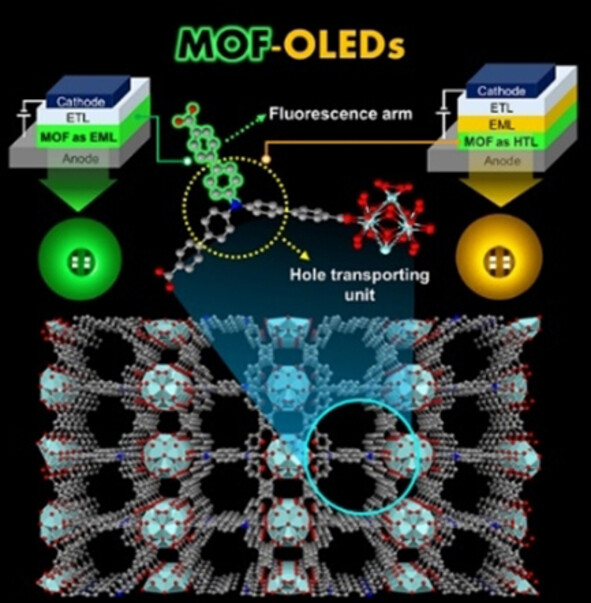
A design concept involving introduction of sp3-hybridized nitrogen atom to conjugated organic linkers leads to intrinsic hole mobility in a luminescent metal–organic framework (MOF). The triarylamine-based MOF (Zr-NBP) has strong fluorescence and high hole mobility of 1.05×10−6 cm2 V−1 s−1. A thin film of Zr-NBP in pure phase was used directly as an emissive layer (EML) and a hole-transporting layer (HTL) in OLED devices.
Ultrasmall Nanocapsules Obtained by Controlling Ostwald Ripening
- First Published: 30 May 2021
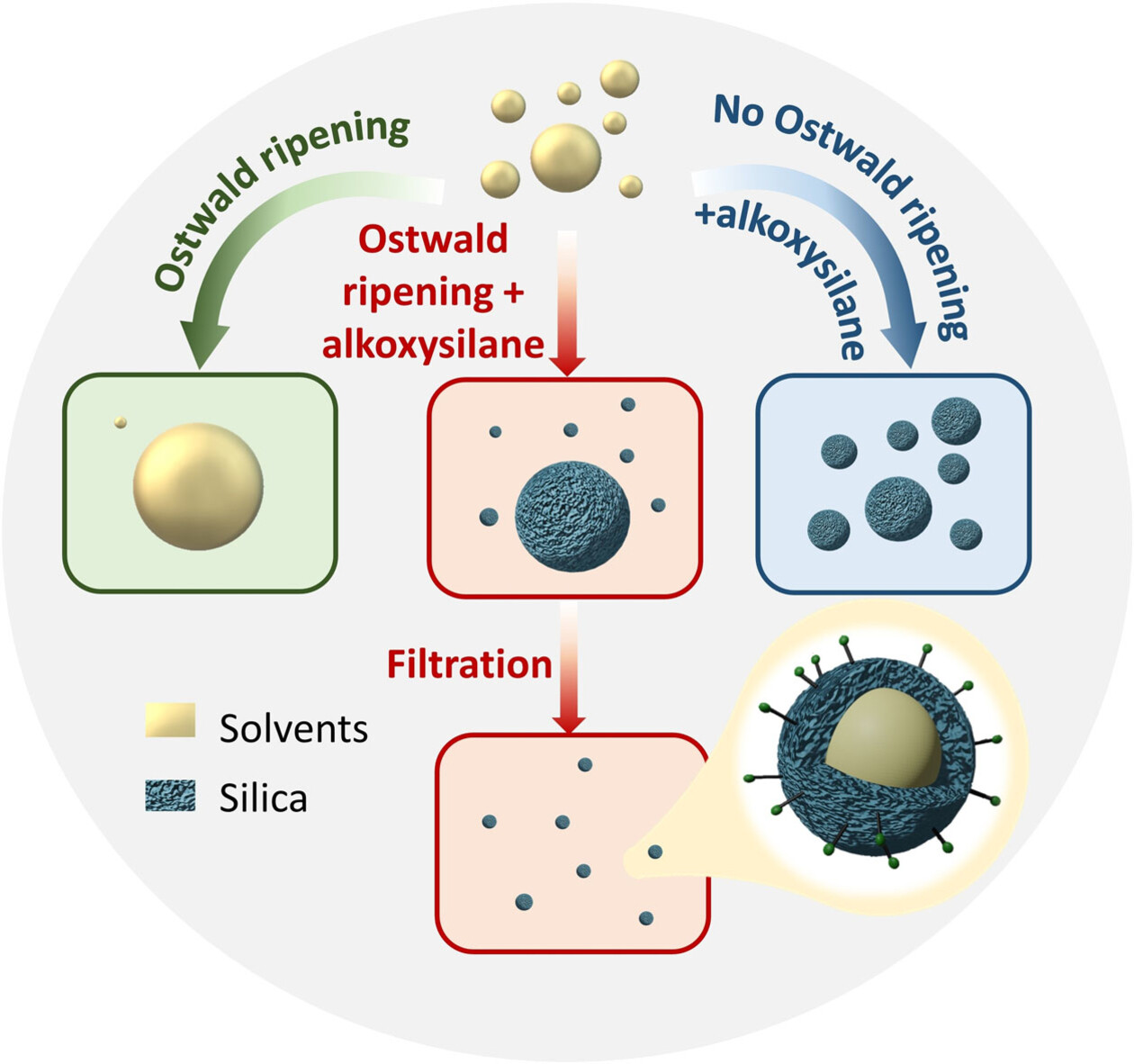
Ostwald ripening is used for reducing particle size in miniemulsions, providing a rapid and versatile method to synthesize silica nanocapsules with an ultrasmall size (ca. 6 nm) and a well-defined core–shell morphology, even at low surfactant concentration. Aqueous solubility of solvents and reactivity of alkoxysilanes used in the synthesis are the key factors in controlling the formation of ultrasmall nanocapsules.
Synthesizing Interpenetrated Triazine-based Covalent Organic Frameworks from CO2
- First Published: 24 September 2023
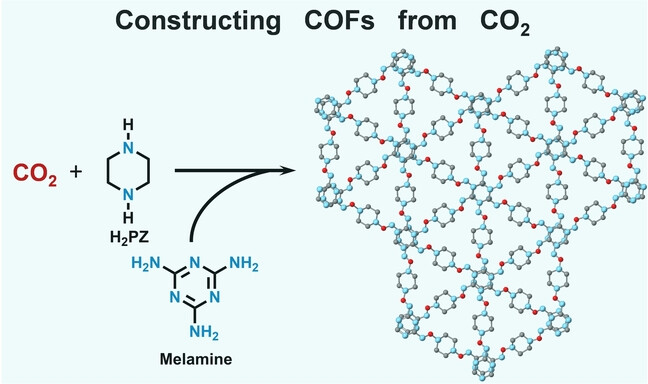
We propose an environmentally-friendly route for the synthesis of crystalline covalent organic frameworks (COFs) from CO2 molecules as a precursor. Two-step reactions using NaBH4, piperazine and melamine with CO2 provided high crystalline structure. The CO2-derived COF has a 3-fold interpenetrated structure showing a BET surface area of 945 m2 g−1 and structural integrity. This structure transforms to high proton conductor upon post-modification reaction with Oxone.
A New Dimension for Coordination Polymers and Metal–Organic Frameworks: Towards Functional Glasses and Liquids
- First Published: 20 October 2019
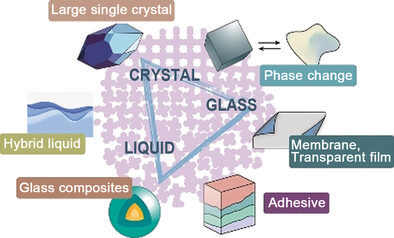
Heart of glass: The liquid/glass states of coordination polymers (CPs) and metal-organic frameworks (MOFs) constitute a new class of amorphous materials and are related to ionic liquids and other ionic soft materials. The unique energy landscape and dynamics of liquid/glass CPs/MOFs with coordination networks offer additional opportunities for properties and functions that are complementary to those of the crystalline state.
Simultaneous Electrochemical Upgrading of Biomass and CO2 Utilization Using Fe/Ni-Derived Carbon Nanotubes Derived from CO2
- First Published: 11 March 2025

Recently, fossil fuel consumption has led to petroleum shortages and high carbon emissions. Thus, this study explores renewable resources for the electrochemical synthesis of 2,5-furandicarboxylic acid (FDCA) and carbon monoxide (CO), from hydroxymethylfurfural (HMF) and carbon dioxide (CO2), respectively, using Fe/Ni-supported carbon nanotubes (CNTs) catalysts derived from CO2, achieving a faradaic efficiency of FDCA as 99.60% and 96.25% for CO.
Potential-Induced Fine-Tuning of the Enantioaffinity of Chiral Metal Phases
- First Published: 15 December 2018
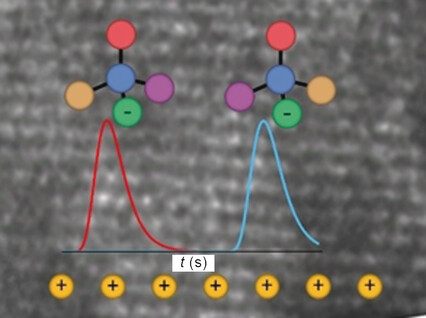
In for a shock: The electric potential of a mesoporous chiral platinum phase can be tuned to allow quantitative separation of the enantiomers in a tryptophan racemate. An applied potential influences the electrostatic interactions, and thereby the enantioaffinity, between the chiral metal and the target enantiomer.
Discovery and Genetic Code Expansion of a Polyethylene Terephthalate (PET) Hydrolase from the Human Saliva Metagenome for the Degradation and Bio-Functionalization of PET
- First Published: 03 June 2022
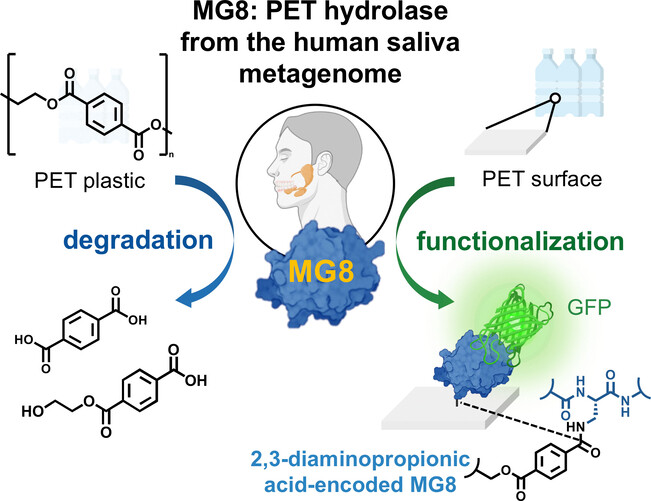
MG8, a novel polyethylene-terephthalate (PET) hydrolase from the human saliva metagenome, with robust PET degradation activity, was discovered and characterized. It was further repurposed into a covalent binder of PET through genetic code expansion, enabling its use to attach protein payloads to PET and other polyesters under mild conditions.
A Genetic Code Expansion-Derived Molecular Beacon for the Detection of Intracellular Amyloid-β Peptide Generation
- First Published: 16 October 2020
On the Mechanisms of Hypohalous Acid Formation and Electrophilic Halogenation by Non-Native Halogenases
- First Published: 12 April 2024
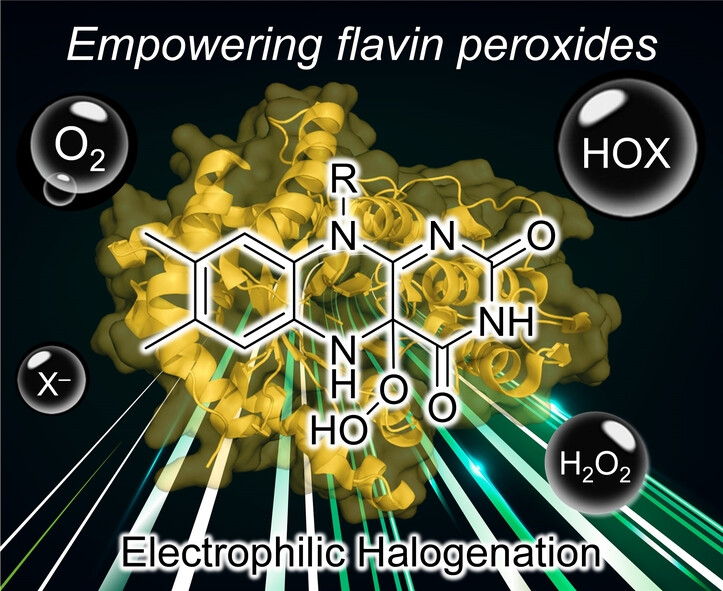
Electrophilic halogenases in nature are typically not efficient. Guided by flavin-dependent halogenase mechanisms and taking advantage of the versatile reactivity of a flavin hydroperoxide adduct and in situ generation of H2O2 by flavin-dependent enzymes, it was possible to promote the formation of a hypohalous acid—which is key for electrophilic halogenation—in various non-native halogenases by rerouting the flavin-generated peroxide.
Luciferin Synthesis and Pesticide Detection by Luminescence Enzymatic Cascades
- First Published: 09 February 2022
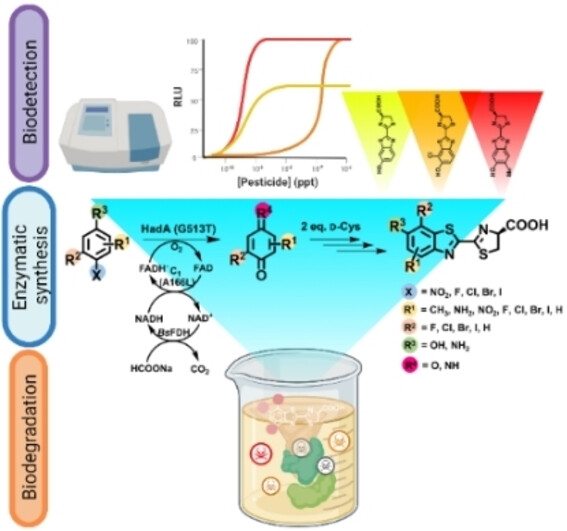
Enzymatic reactions were developed to convert 19 phenolic derivatives containing halogen, nitro, and methyl substituents into eight D-luciferin analogues, including the novel compounds 4′,5′-dimethyl-D-luciferin and 5′-methyl-D-luciferin, which emit brighter and longer-wavelength light than the native D-luciferin. These reactions enabled the further development of luminescence technology for the sensitive detection of organophosphate pesticides.
Carboxylic Acid Reductase Can Catalyze Ester Synthesis in Aqueous Environments
- First Published: 28 November 2020
A Chemo-Enzymatic Cascade for the Smart Detection of Nitro- and Halogenated Phenols
- First Published: 24 June 2019
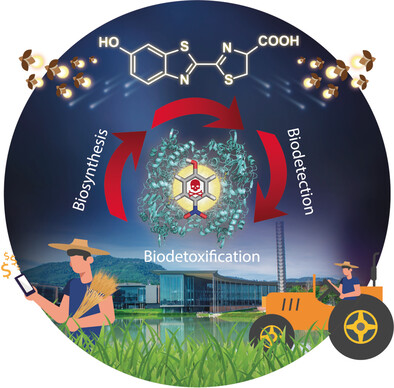
A chemo-enzymatic cascade was developed to convert nitro- and halogenated phenols into d-luciferin, a valuable chemical widely used in biomedical applications. The reaction can be further coupled with firefly luciferase to generate bioluminescence. This integrative biodetoxification–biosynthesis platform can be used to detect these toxicants without the requirement for pre-treatment.
One-Pot Bioconversion of l-Arabinose to l-Ribulose in an Enzymatic Cascade
- First Published: 03 January 2019
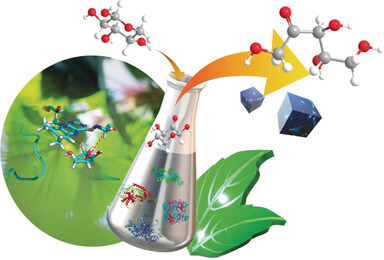
A spoonful of sugar: A new concept for the synthesis of l-ribulose from l-arabinose was successfully established using a one-pot bioconversion consisting of engineered pyranose 2-oxidase, xylose reductase, formate dehydrogenase, and catalase. Transient kinetics in combination with molecular dynamics simulations indicate that the sugar substrate is positioned closer to the FAD N5-position in the engineered pyranose 2-oxidase than in the wild-type.
Corrosion-Responsive Self-Healing Coatings
- First Published: 20 March 2023
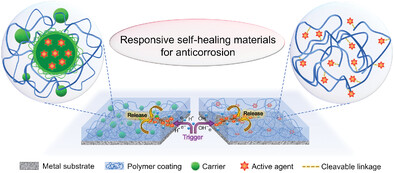
The development of so-called smart organic coatings for anticorrosion application involves stimuli-responsive materials with a self-healing ability. For this, it is of crucial importance to understand various aspects related to the storage and release of self-healing agents, as well as the spreading of the trigger signal. The requirements and possibilities for designing self-healing materials for corrosion protection are discussed.
Metal-Halide Perovskite Transistors for Printed Electronics: Challenges and Opportunities
- First Published: 12 October 2017
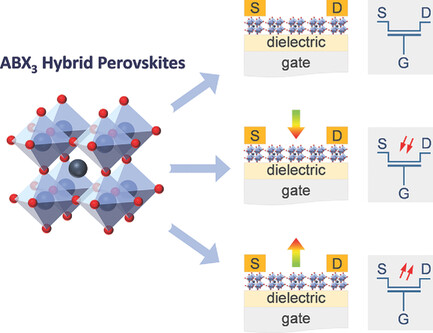
Their extraordinary electrical and optical properties combined with the abundance of their raw materials, have driven metal-halide perovskites (MHPs) to the forefront of functional electronic materials research, with envisioned applications spanning across several technology sectors. The recent advances in the use of MHPs in the area of transistors and transistor-related applications are summarized.
Hot-Injection Synthesis of Metal Organochalcogenide Nanocrystals with Tunable Compositions and Competitive Hole Mobility
- First Published: 18 February 2025
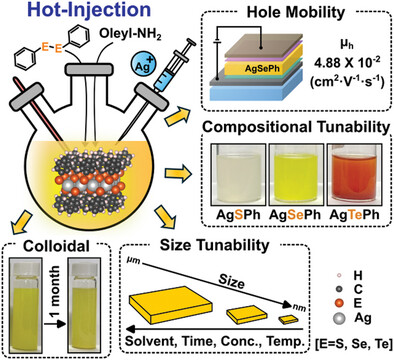
A high-yield hot-injection synthesis produces high-quality AgSePh nanocrystals within 15 s, maintaining colloidal stability and crystallinity for device integration. The process enables size control and extends to other MOCs for tunable optical properties. AgSePh exhibits thermal stability, p-type behavior, and high hole mobility, making it a competitive candidate for optoelectronic applications.
Self-Healing Photochromic Elastomer Composites for Wearable UV-Sensors
- First Published: 06 March 2023
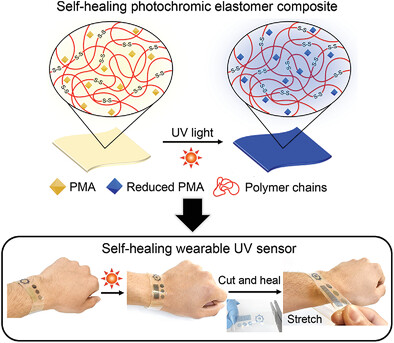
Multifunctional elastomer composites with dynamic polymer networks enable light-responsive color changes, large stretchability and durability, adhesive properties, and healing properties to recover function after damage. These dynamic composites are implemented into functional soft devices including sticker, skin-mounted, textile-mounted, and wristband sensors for portable and wearable ultraviolet dose monitoring.
Modulating Protein Corona and Materials–Cell Interactions with Temperature-Responsive Materials
- First Published: 08 October 2021
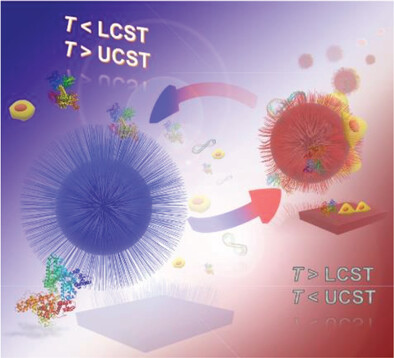
Temperature-responsive polymers exhibit a hydrophobicity change upon temperature. Materials from these polymers are employed for proliferating cells at 37 °C and harvesting them by cooling without harming the cell membranes. Furthermore, proteins can be easily separated using these materials by adsorption at high temperature and collection by cooling.





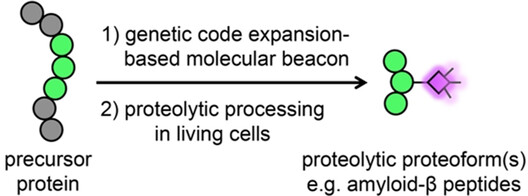
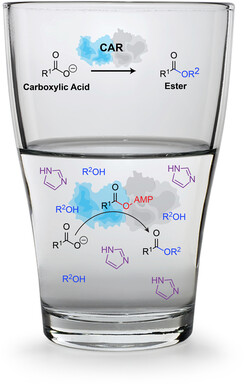

![High Solid-State Near Infrared Emissive Organic Fluorophores from Thiadiazole[3,4-c]Pyridine Derivatives for Efficient Simple Solution-Processed Nondoped Near Infrared OLEDs](/cms/asset/0a59c08e-6eb9-429a-a1b2-b3001aaa7919/adfm202002481-gra-0001-m.jpg)










